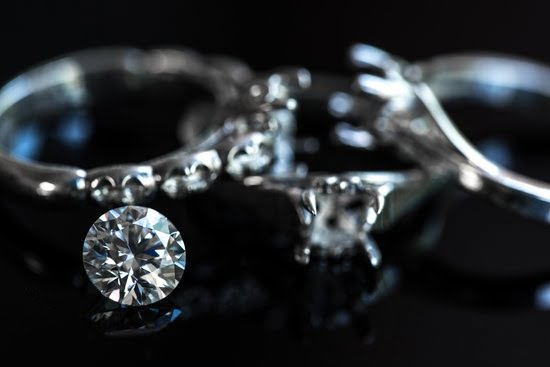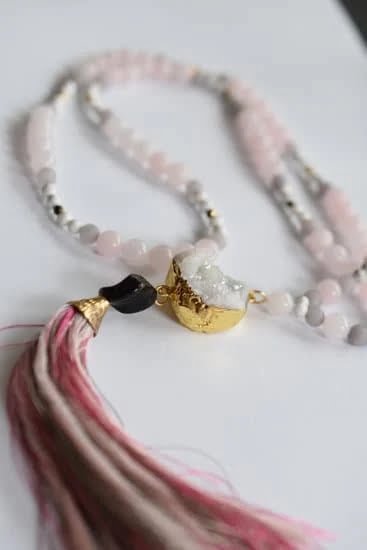Are you wondering how to tell if jewelry is gold? Whether you’re a jewelry enthusiast or simply want to ensure the authenticity of your gold pieces, it’s essential to have the knowledge and tools to determine if your jewelry is indeed made of gold. From understanding different types of gold to utilizing testing methods, this article will guide you through the various ways to identify real gold jewelry.
Gold has been treasured for its beauty and value for centuries, making it one of the most sought-after metals in the jewelry industry. Its enduring appeal and timeless elegance have made gold jewelry a popular choice for adornment and investment. Understanding the characteristics of genuine gold can help you make informed decisions when buying or evaluating gold jewelry.
In this comprehensive guide, we will delve into the different types of gold, such as 14K, 18K, and 24K, and explain how their purity levels can be distinguished. Additionally, we will explore the significance of gold hallmarks and how they can indicate the authenticity and quality of gold jewelry.
We will also discuss various testing methods, including visual inspection tips, magnet tests, and using nitric acid to determine if your jewelry is truly made of gold. With these valuable insights, you’ll be equipped with the knowledge to confidently assess whether your jewelry is authentic gold.
Different Types of Gold
Gold jewelry comes in a variety of types, and each type has its own unique properties. Here are some different types of gold to look out for when trying to determine if your jewelry is made of genuine gold:
- 24-Karat Gold: This is the purest form of gold, consisting of 99.9% gold and is very soft and malleable.
- 18-Karat Gold: Made up of 75% gold and alloyed with other metals for added strength and durability.
- 14-Karat Gold: Contains 58.3% gold and is commonly used in jewelry due to its balance of durability and affordability.
- 10-Karat Gold: It consists of 41.7% gold and is the minimum karat designation that can still be legally considered as real gold in the United States.
It’s important to understand the different types of gold because it can affect the value, durability, and appearance of your jewelry. By knowing the type of gold used in your jewelry, you can accurately assess its quality and make informed decisions about its care and maintenance.
When determining whether your jewelry is made of real gold, understanding these different types can help you gauge its authenticity based on hallmarking standards or specific gravity tests.
Lastly, keep in mind that regardless of the type of gold used in your jewelry, knowing how to tell if jewelry is gold through various testing methods will give you added assurance about its authenticity. Whether it’s professional appraisal, visual inspection tips, or using a magnet test or nitric acid test, being aware of the type of gold will assist you in accurately assessing your jewelry’s authenticity against these testing methods.
Understanding Gold Hallmarks
When looking to determine if jewelry is made of genuine gold, one of the first places to start is by checking for gold hallmarks. These are markings that indicate the purity of the gold in the piece. Here are some common gold hallmarks and what they mean:
- Karat Marks: One of the most common gold hallmarks is the karat mark, which indicates the purity of the gold. For example, 24K indicates pure gold, while 18K indicates 75% pure gold and 14K indicates 58.3% pure gold.
- Maker’s Mark: This hallmark identifies the manufacturer or designer of the jewelry piece. It can help verify the authenticity and origin of the jewelry.
- Country of Origin Mark: Some countries require that all gold jewelry bear a hallmark indicating its country of origin.
In addition to understanding these hallmarks, it’s important to note that some fake or counterfeit pieces may also bear these marks, so it’s always best to use other testing methods in conjunction with examining hallmarks.
Another vital aspect to consider when checking for gold hallmarks is ensuring that they are clearly stamped and legible. Illegible or unclear markings may not provide accurate information about the jewelry piece’s composition.
Using a Gold Testing Kit
Gold testing kits are a popular and reliable method for determining whether your jewelry is made of real gold. These kits are readily available at jewelry stores, online retailers, and even some hobby shops. They are easy to use and provide accurate results in a matter of minutes. Below, we will explore how to use a gold testing kit to determine if your jewelry is gold.
Instructions for Using a Gold Testing Kit
When using a gold testing kit, it is important to carefully follow the instructions provided with the kit. Typically, these kits come with a testing stone and several solutions that help determine the purity of the gold. To start, you will need to rub the piece of jewelry in question against the testing stone to leave a streak.
Then, you can apply a small amount of the testing solution onto the streak. The color change or lack thereof will indicate whether the piece is genuine gold.
Interpreting the Results
After applying the testing solution, it is important to observe any color changes on the streak left on the testing stone. A genuine piece of solid gold will not change colors when exposed to these solutions.
However, if your jewelry contains other metals like copper or brass, the color may change when coming into contact with these solutions. It is essential to compare your results with a chart provided by the gold testing kit to accurately determine whether your jewelry is real gold.
Benefits of Using a Gold Testing Kit
Using a gold testing kit offers several advantages. They are relatively inexpensive and easy to use, making them accessible for those who want to verify their jewelry’s authenticity at home. Furthermore, these kits can provide quick and accurate results without requiring professional assistance or expensive equipment. By following proper procedures and understanding how to interpret results, individuals can confidently determine if their jewelry is made of real gold using this method.
Professional Jewelry Appraisal
When it comes to determining if your jewelry is gold, seeking a professional jewelry appraisal can be a reliable option. A certified gemologist or appraiser has the expertise and tools to accurately assess the authenticity and value of your gold jewelry. This process involves a comprehensive examination of the jewelry piece, including a close inspection of its markings, design, and overall craftsmanship.
During a professional jewelry appraisal, the expert will also test the gold using various methods to confirm its purity. These tests may include analyzing the metal’s conductivity, assessing its reaction to acids, and measuring its weight and density. By conducting these meticulous evaluations, an appraiser can provide you with a precise assessment of your gold jewelry’s composition and worth.
It’s important to note that while seeking a professional jewelry appraisal is an effective way to determine if your jewelry is gold, this service may come with a fee. However, for individuals who want definitive confirmation of their gold jewelry’s authenticity and value, investing in a professional appraisal can be well worth the cost.
| Methods | Description |
|---|---|
| Conductivity Testing | This method measures how easily electricity passes through the metal, as pure gold is an excellent conductor of electricity. |
| Acid Reaction Test | By exposing the metal to nitric acid, an appraiser can observe any changes in color or texture that indicate whether the item is genuine gold. |
| Weight and Density Measurement | The appraiser evaluates the item’s weight against its volume to calculate its specific gravity, providing insight into its purity. |
Specific Gravity Test for Gold
One of the most accurate ways to determine if your jewelry is gold is by conducting a specific gravity test. This test measures the density of the metal and can help you identify if the piece is made of real gold or not. To perform this test, you will need a scale, a container filled with water, and a formula to calculate the specific gravity.
First, weigh the jewelry on a scale in grams. Then, fill a container with water and record its weight. Next, submerge the jewelry in the water and record the new weight. Finally, divide the weight of the jewelry by its loss of weight in water to calculate its specific gravity.
Gold has a specific gravity of 19.3g/cm^3. If your calculated specific gravity is close to this value, then it is likely that your jewelry is made of real gold. Keep in mind that this test should be done carefully to ensure accurate results.
| Item | Weight (G) |
|---|---|
| Jewelry | 5 g |
| Container with Water | 500 g |
| Jewelry submerged in Water | 4 g |
Visual Inspection Tips for Gold Jewelry
Gold jewelry is a popular choice for many people due to its timeless appeal and investment value. However, determining if your jewelry is made of real gold can be challenging. Conducting a visual inspection of your gold jewelry can give you some clues as to its authenticity.
Color and Luster
One of the easiest ways to visually inspect gold jewelry is by looking at its color and luster. Real gold will have a rich, warm yellow color that does not change over time. In addition, gold has a distinct luster or shine that is hard to replicate with other metals.
Stamp or Hallmark
Another important aspect to look for during a visual inspection is the presence of a stamp or hallmark on the jewelry piece. Genuine gold jewelry is typically marked with a karat weight stamp such as 10k, 14k, 18k, or 24k. These stamps indicate the percentage of pure gold in the piece.
Wear and Tear
Examine the wear and tear on your gold jewelry. Real gold is resistant to corrosion, so it should not tarnish or discolor over time. Additionally, since it is relatively soft, it may show signs of scratching or denting with regular use.
By conducting a thorough visual inspection using these tips, you can get a better idea of whether your jewelry is made of real gold. It’s important to note that while visual cues can provide some indication of authenticity, they are not foolproof methods for determining if jewelry is genuinely made of solid gold. For more accurate results, consider using additional testing methods such as professional appraisal or chemical testing.
Magnet Test for Gold Jewelry
When it comes to determining the authenticity of gold jewelry, the magnet test is a simple and effective method. While it’s not foolproof, it can provide some initial insight into whether your jewelry is made of real gold or not.
To conduct the magnet test, you will need a small magnet. Simply hold the magnet near your gold jewelry and observe its behavior. Real gold is not magnetic, so if your jewelry is truly made of gold, it should not be attracted to the magnet. If the piece exhibits any magnetic attraction, it may be an indication that the item is not pure gold.
It’s important to note that while the magnet test can be a useful first step in identifying fake gold jewelry, it should not be relied upon as the sole method for determining authenticity. Other tests such as visual inspection, understanding gold hallmarks, and professional appraisal should also be considered to accurately assess whether your jewelry is made of real gold.
If you’re still uncertain after conducting the magnet test, consider using additional methods such as testing with nitric acid or consulting with a jeweler who specializes in appraising gold jewelry. Evaluating all these factors together will give you a more comprehensive understanding of whether or not your jewelry is indeed made of genuine gold.
Testing With Nitric Acid
One of the most reliable methods to determine if your jewelry is made of real gold is by testing it with nitric acid. Nitric acid is a strong corrosive chemical that can help reveal the actual composition of the metal. This method requires caution and should only be done by professionals as it involves working with a potentially dangerous substance.
To conduct the test, a small scratch or mark is made on a part of the jewelry that is not visible when worn, such as the clasp or backside. A small drop of nitric acid is then applied to the marked area.
The reaction between the acid and the metal will determine if it’s real gold based on the color change or lack thereof. If there is no reaction and the mark remains unchanged, it’s likely that the jewelry is real gold.
It’s important to note that this test should be performed with extreme care and only by those who are knowledgeable about handling chemicals. Improper use of nitric acid can cause harm to both the user and the jewelry, so it’s crucial to seek professional assistance when using this method to identify if your jewelry is gold.
By learning how to tell if jewelry is gold through a thorough understanding of how nitric acid reacts with metals, individuals can gain confidence in identifying real gold from imitations. While this method may not be suitable for at-home testing, consulting a professional jeweler who has experience in conducting nitric acid tests can provide accurate results regarding your gold jewelry’s authenticity.
Conclusion
In conclusion, determining whether your jewelry is gold requires a combination of knowledge, tools, and sometimes professional help. Understanding the different types of gold and its hallmarks is essential in identifying the purity and authenticity of your jewelry. Additionally, using a gold testing kit can be an effective method for confirmation.
Visual inspection tips can provide clues about the quality of your jewelry, while performing a magnet test or testing with nitric acid can offer further validation. Ultimately, if you are unsure about the authenticity or value of your gold jewelry, seeking a professional jewelry appraisal is recommended.
By familiarizing yourself with these methods and understanding the key indicators of real gold, you can feel more confident in evaluating your own collection or potential purchases. With diligence and the right resources at hand, you can effectively determine if your jewelry is made of genuine gold. Remember to leverage multiple methods to achieve a comprehensive assessment, especially when dealing with valuable pieces.

Welcome to my jewelry blog! My name is Sarah and I am the owner of this blog.
I love making jewelry and sharing my creations with others.
So whether you’re someone who loves wearing jewelry yourself or simply enjoys learning about it, be sure to check out my blog for insightful posts on everything related to this exciting topic!





